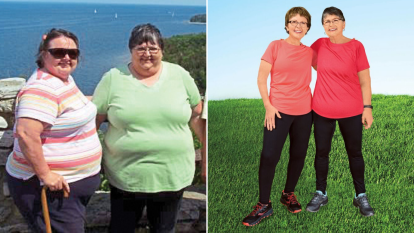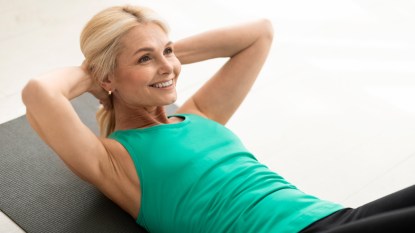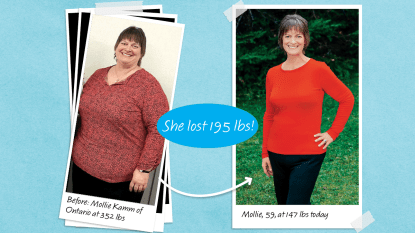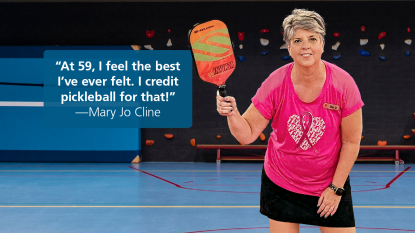What Is Cardiovascular Endurance? (and HowTo Improve It)
Your heart health will greatly benefit.
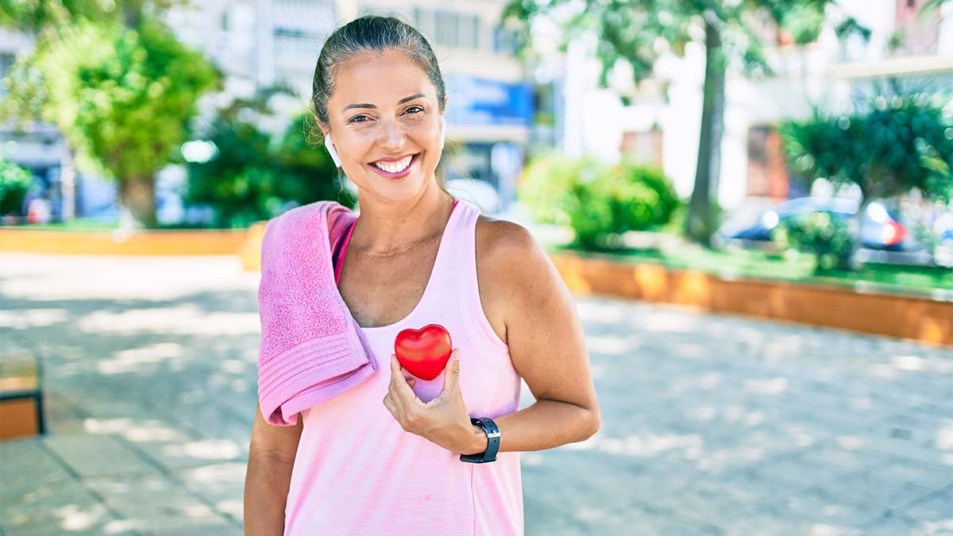
If you’re anything like me, you think about your heart health every day. Whether it’s skipping red meat at dinner, choosing heart-healthy cereals for breakfast, or making sure to take a long walk every afternoon, there are plenty of choices I make to support this vital organ. Of course, we all know how important heart health is, especially as we age — and one of the best ways to keep our hearts in top-notch condition is by improving our cardiovascular endurance. But what exactly is cardiovascular endurance, and how can you improve it? Keep reading for the answers to these questions and more..
What is cardiovascular endurance?
Cardiovascular endurance, also called cardiorespiratory fitness or cardiorespiratory endurance, is a measure of how well you can exercise for extended periods of time. If you have high cardiovascular endurance, you might be able to run a few miles without stopping; if you have low endurance, you’ll likely be huffing and puffing after just a few minutes of endurance exercise. (Guilty!)
While all types of exercise are important for maintaining your overall health, cardiovascular endurance has a special place in my heart (pun intended) because it can help increase your body’s ability to fight off certain diseases, especially as you age. We’ve all heard from the doctor about how important regular exercise is for slowing the aging process of your heart and arteries, and recent scientific studies have shown that those with higher cardiovascular endurance have a decreased risk of developing high blood pressure, coronary heart disease, and diabetes.
So even if you have loathe cardio, it’s time to put that hatred aside. It’s clear that cardio and high-intensity exercise is vital to maintaining heart health and improving longevity. And the health benefits don’t end there.
How is cardiovascular endurance measured?
Cardiovascular endurance is measured by how well your body can utilize a certain amount of oxygen — that is, how much oxygen you can take in during high-intensity aerobic activity, such as sprinting or swimming. There are a few different ways to measure cardiovascular endurance and aerobic fitness — some you can do at home, and others that are more sophisticated.
To measure your cardiovascular endurance, it’s important to understand the different types of heart rates and what they indicate. According to the Mayo Clinic, your resting heart rate is your heart rate when you are at rest — ideally taken right after you wake up in the morning, but at least more than two hours after exercising or any stressful event. A normal resting heart rate for an adult is 60 to 100 beats per minute.
Your target heart rate is the heart rate you need to achieve to give your lungs and heart a solid workout, and this varies by age. For adults approximately 55 years old, for example, your target heart rate is between 83 and 140 beats per minute. To measure your heart rate, find your pulse, either on your wrist just below your thumb, or on your neck. Press two fingers to your pulse, and count the number of beats for 15 seconds. Multiply that number by four — that’s your heart rate.
How’d you do? Is your resting heart rate closer to 60 beats per minute or closer to 100? This can give you an indication of how high your cardiovascular endurance is — or, how much room you have for improvement. More sophisticated tests to measure cardiovascular endurance include metabolic equivalents, or METs, and maximum oxygen uptake, or VO2 max. These tests would likely be done by a sports physician or professional athlete hoping to improve their performance.
So how can you improve your cardiovascular endurance? The answer is simple: incorporate more cardio into your daily physical activity. But before you groan and stop reading, hear me out — it doesn’t have to be all running or all joyless. I’ve gathered my four favorite ways to improve cardiovascular endurance below.
Dancing
One of my favorite ways to improve cardiovascular endurance is dancing — there’s no better way to get a workout in and relieve stress than busting a move. To get started with dancing, check out your local YMCA or gym — they likely offer several different types of dance classes, from Zumba to ballroom dance to aqua dance.
It can be difficult to push yourself enough to reach your target heart rate on your own, but a fitness instructor will make sure that you’re working muscles and getting in that perfect zone. Plus, you can attend with a friend — a workout AND social hour? Yes, please! If you don’t have a gym membership or feel shy about dancing in front of a group, you have another resource at your fingertips — there are hundreds and hundreds of exercise programs on YouTube, including dance lessons. Whatever your skill level or time commitment, there’s a YouTube workout available. You can get those dance moves in and boost your cardiovascular endurance without ever leaving the comfort of your home.
Swimming
Another one of my favorite cardio workouts is swimming. Like dance, you can likely find tons of swim workout classes at your local gym or YMCA — or check out when lap swimming is open and do your own thing.
While swimming might be less accessible than other types of cardio — it’s not like you can do a YouTube swim workout in your basement — I put it at the number two spot on my list because of how amazing it is for your heart and lungs. The double whammy of using your entire body while also periodically holding your breath means that a good swim will push your fitness level and overall health to the max. In fact, some studies indicate that swimming might be the best thing you can do to lower your blood pressure and cholesterol and increase your cardiovascular endurance. Talk about a good workout!
But the real reason why I love swimming so much is the lack of impact. Water cushions and supports your joints, making it possible to do high-intensity aerobic activity without the impact of running, dancing, or any other type of cardio. For those of us aging out of our marathon days, cardio doesn’t get much better than swimming.
High-intensity Interval Training (HIIT)
There’s no resource more valuable than time, which probably explains the explosive popularity of high-intensity interval training, or HIIT. HIIT packs the best workout in the least amount of time by alternating between high-intensity and low-intensity cardio (hence, “interval training”).
For example, you might run three miles, with a one-minute sprint every half mile. Or you might do a 30-minute dance workout, with one minute of burpees every six minutes. The combination of endurance and bursts of high-intensity exercise pushes your heart and lungs to the max and is scientifically proven to increase your aerobic capacity, burn fat, and improve your overall fitness level.
But the craziest part is how HIIT stacks up to traditional cardio workouts. A 2016 study found that a daily 10-minute interval workout is just as effective at improving oxygen uptake as a 50-minute continuous pace workout.
In other words, work some sprints into your run, and you’ll see the same improvement in your cardiovascular system in 10 minutes as you would after a fifty-minute jog. Ten minutes of running, or 50? Um, I’ll take 10, please! The best part about HIIT is that you can work it into any type of exercise, whether that be dance, swimming, boxing, rowing, or any other type of cardio. If you’re a runner, add some sprints to your routine. If you like doing body-weight workouts, add in some burpees. You can make HIIT work for whatever workout routine you enjoy the most.
What’s the best cardiovascular exercise?
And that brings us to the most important question — which cardiovascular exercise is best? The answer is whichever one you enjoy the most and contributes to your overall well-being!
The Mayo Clinic recommends at least 75 minutes of vigorous exercise per week to maintain your cardiovascular system and overall health, or 120 minutes of moderate exercise. You can easily reach those benchmarks with just three 25-minute workouts per week if you incorporate HIIT. The hardest part about doing cardio is getting yourself out the door, so finding an exercise routine that you love (or at least that you can put up with) is key to making it a regular habit. We can’t overstate how important heart health and overall cardiovascular fitness is for preventing disease and promoting wellness into old age. Whether you enjoy cardio or not, working some sort of aerobic exercise into your week is critical for boosting cardiovascular endurance and reaping all those benefits. So find an exercise you love, and get started today — your heart will thank you for it.


